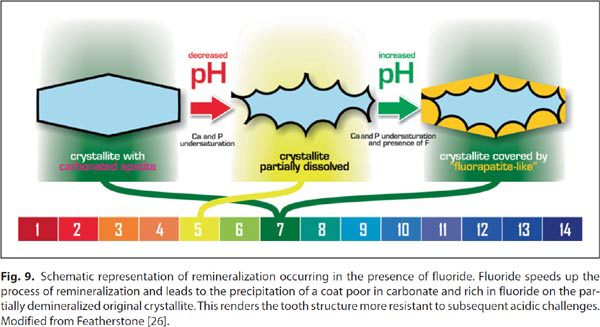Recently in dentistry we have come to understand the importance of how pH affects our oral health. The pH is the measure of acidity or alkalinity of a solution on a logarithmic scale in which 7 is neutral. Values lower than 7 are more acidic and values higher than 7 are more alkaline. There is a tug-of-war that takes place in our mouth. Healthy bacteria protect our teeth and thrive in an environment of 6.8 or higher. Bad bacteria cause cavities and thrive when our mouth is acidic, below 6.8. Dry mouth or frequent sugary snacks contribute to an acidic mouth.
To tip the scales towards healthy bacteria, we need to improve the pH in our mouth. This can be done by using BasicBites. These sugar-free chocolate chews contain calcium and arginine to promote a healthier pH and protect the teeth. We recommend patients chew one after breakfast and before bedtime. These can be purchased online or in our office.
Another option is to brush our teeth with toothpaste and baking soda. The baking soda has a pH of 9 and will help shift the mouth back to a healthier pH.
What else can we do? We can change our diet, increase our fluoride use and improve our oral cleaning habits. Diet is key. Too many people want to drink soda on a daily basis, but do not want the harmful effects it causes. Many sodas and energy drinks are acidic. The acidity of Coke and Pepsi are around 2.3 on the pH scale. This is over 3 units difference from 5.5 where our teeth begin to erode – which means, it is 1000 times more acidic than is necessary to begin damaging our teeth. Soda isn’t the only offender, frequent sugary snacks are damaging as well. Make the choice today to choose healthier snacks. Choose fresh fruits, vegetables and nuts and cheese as snacks.
Fluoride has been used for many years to strengthen our teeth. It works for our benefit in several ways. First it inhibits bacteria growth. Secondly, it helps our teeth to remineralize quicker (something that they need when they begin to demineralize/erode/dissolve). Third, as the tooth remineralizes fluoride gets mineralized into the outer layer of the tooth making it 10 times more resistant to acid attack. If our teeth usually start to demineralize or erode at a pH of 5.5, with the help of Fluoride, we can now withstand acid attacks as strong as 4.5 (10 times more acid). If you have had a cavity in the last 2 years, then you should try using a prescription strength toothpaste that has 10 times more fluoride in it.
Our cleaning habits are essential for a healthy mouth. We need to be brushing twice daily for about 2 minutes each time. Some people brush too quickly and are not very thorough when brushing their teeth. Time yourself to see how long you spend brushing, you might be surprised by the results. There is an app you can download called Brush DJ, it will play a song on your phone for exactly the length of time you should be brushing – when the music stops, you can stop. Another tip is to brush and spit, but do not rinse. This leaves a little fluoride against the teeth, aiding in the remineralization of the teeth. Flossing should happen at least once daily. For those who do not enjoy flossing, try a WaterPik. Lastly, if you want to take your brushing to the next level, use an electric toothbrush. Purchase one with a rechargeable battery in it to avoid the inconvenience of changing batteries. Studies show that electric toothbrushes are far more effective at removing bacteria from our teeth than manual toothbrushes.
In conclusion, if you have had a recent cavity, it might be time to look at your diet, review your oral cleaning habits, use prescription strength fluoride toothpaste, or try BasicBites and/or baking soda to improve the health of your mouth.


